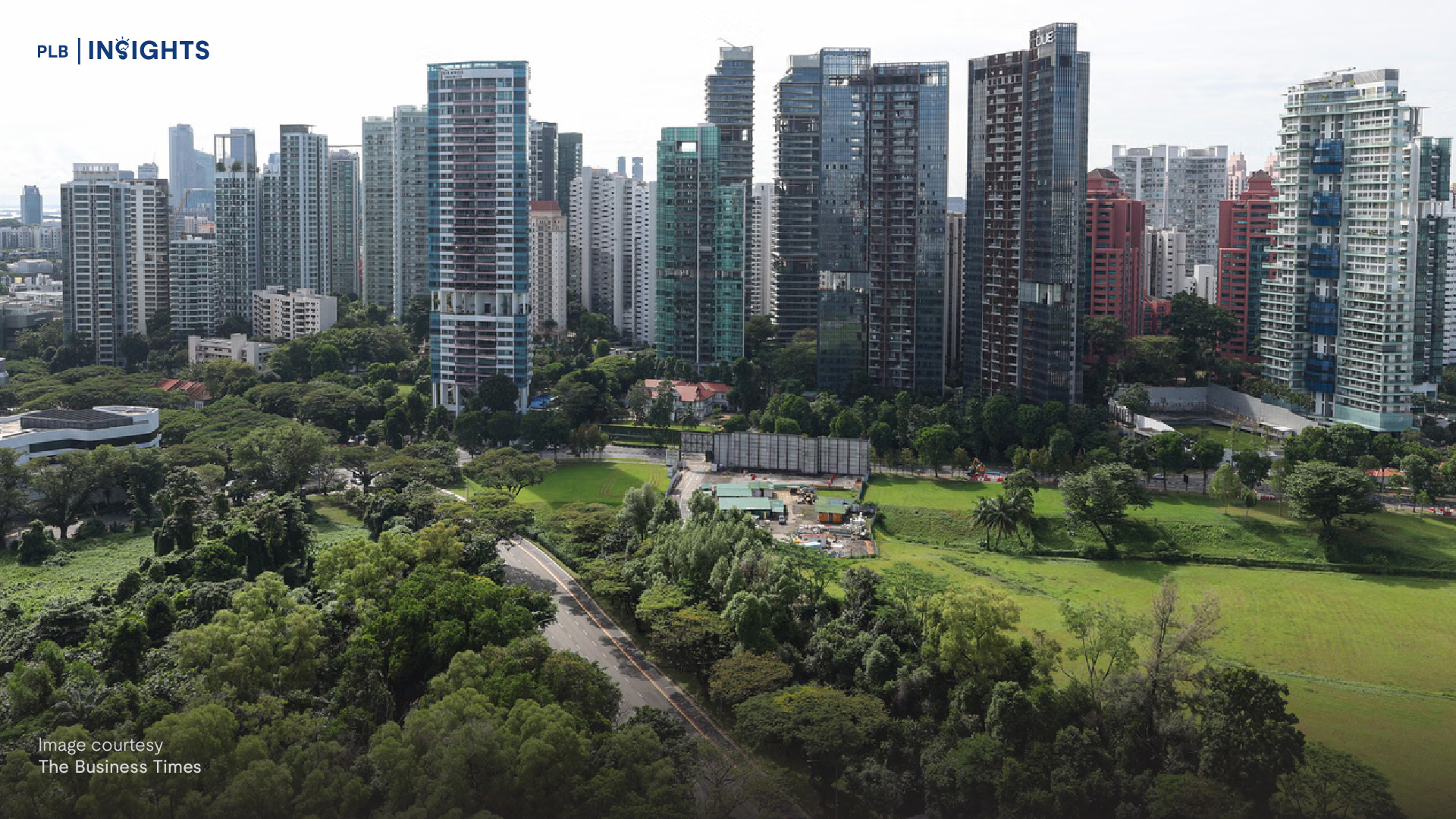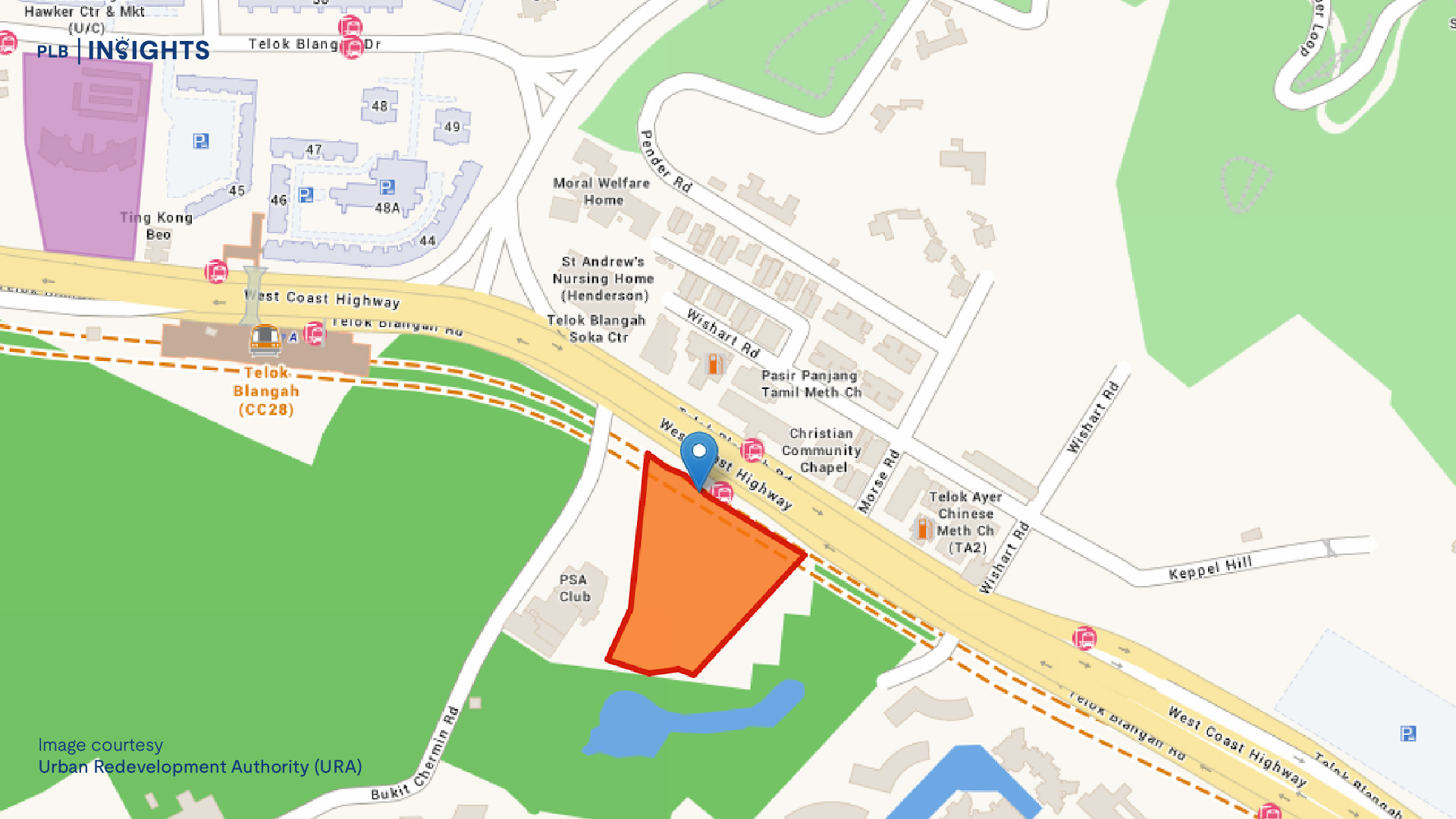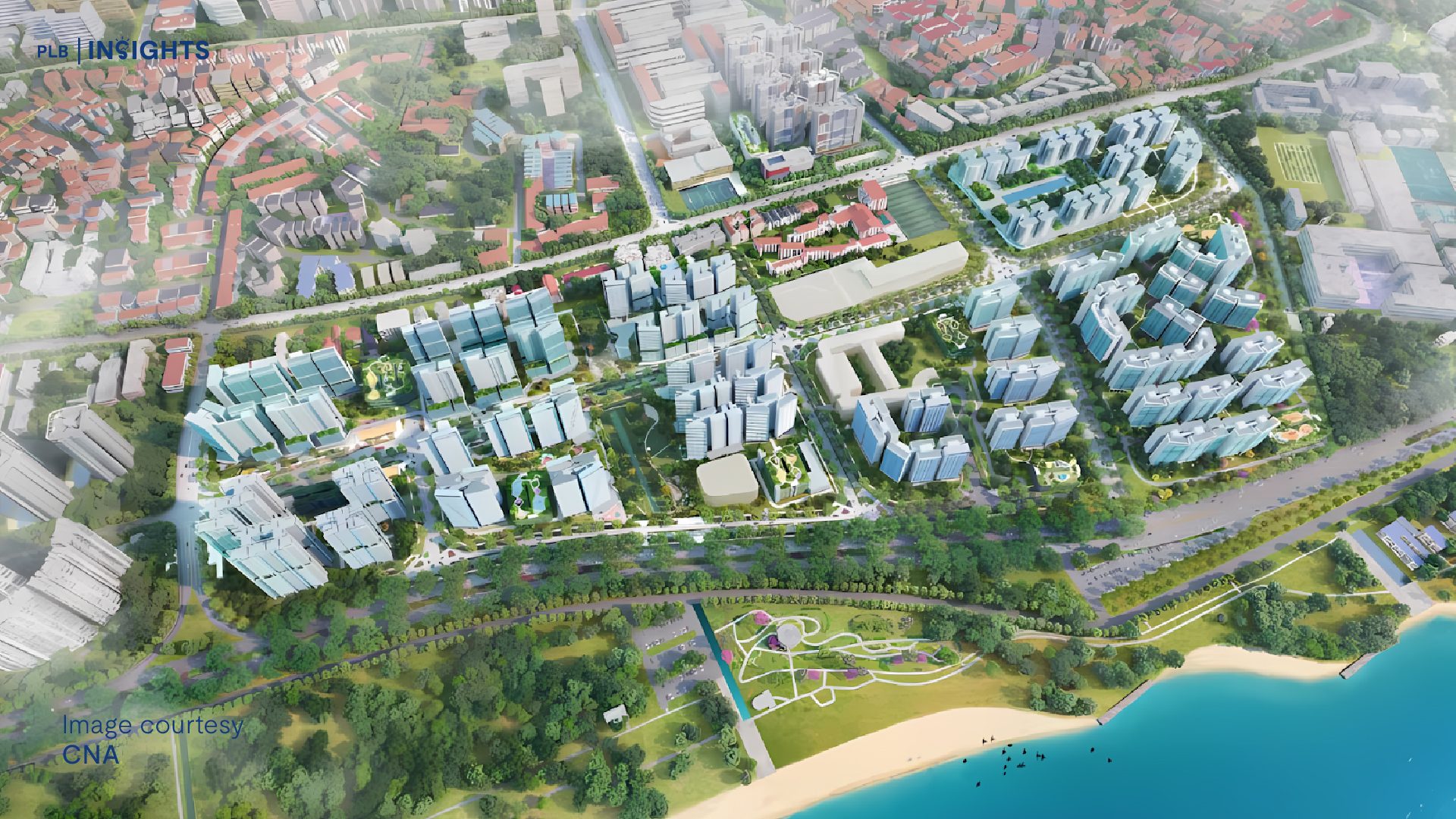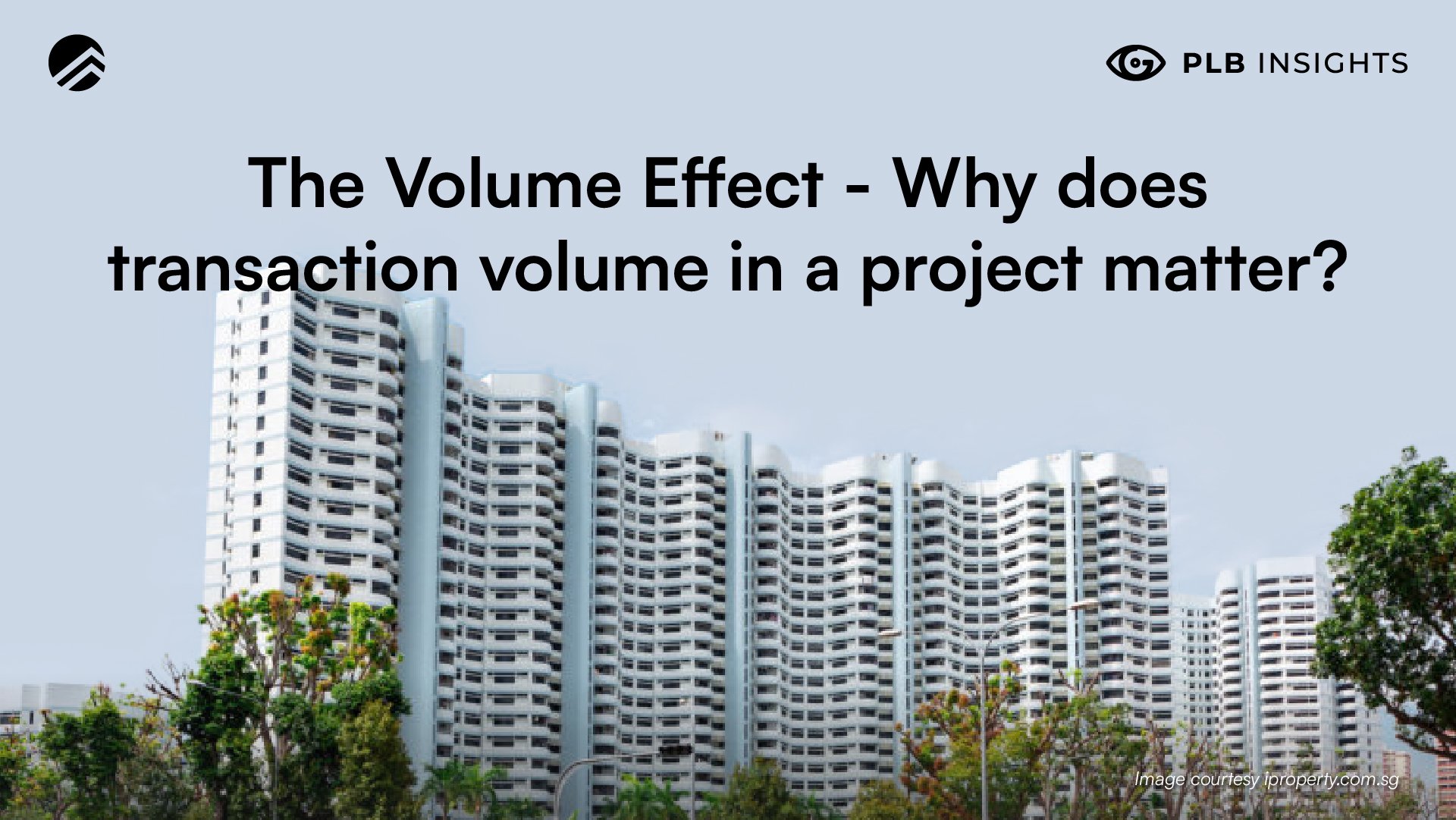
Choosing to buy a property is one of the biggest decisions that a person can make. It means using a large chunk of your life savings and taking on a loan for around 3 decades. This is definitely a decision that has to be thought through. Whether you use a simple pros-and-cons list or complex financial sheets to come to that decision, there is always some form of analysis involved.
At PropertyLimBrothers, we use a tool called MOAT analysis. It is a PLB exclusive tool that we use to analyse all projects in Singapore to determine buyer-specific project desirability.
MOAT analysis @ PropertyLimBrothers
One of our key methods in evaluating investment decisions at PropertyLimBrothers is the MOAT analysis. Like a moat that ensures the longevity of a castle, this is a holistic approach to understand the strengths and weaknesses of a project, relative to others.
The MOAT analysis is a scoring system that contains 11 metrics: unit density, distance to MRT, distance to schools etc. This comprehensive comparison makes it easier to standardise comparisons across multiple projects. Putting intangible aspects of a property such as demand and attractiveness into a number is complex, but it allows us to select the best project amongst a range of potential candidates. While the importance of each metric may vary for different buyer profiles, there are some metrics that are more fundamental than others. In this system, buyers will be able to select and compare between projects, as well as key in the factors that are more important to them. For a more detailed understanding of how and why we use the MOAT analysis, you can check out our NOTG Episode here.
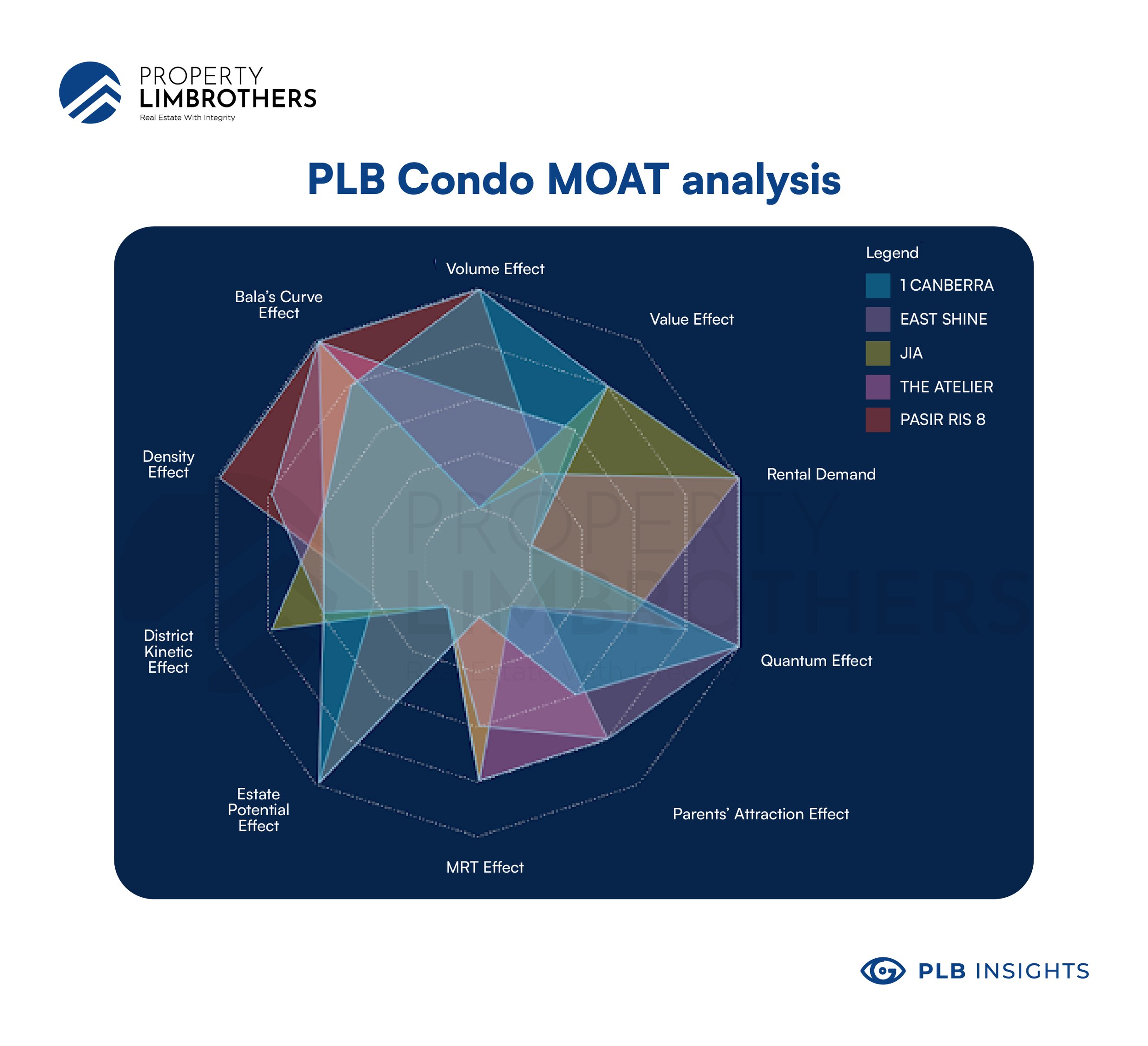
Volume Effect
One of the factors that we have in the MOAT analysis is the volume effect. This remains the most misunderstood but important aspect of property analysis. Why does volume matter? Is a lower or high density more beneficial to the buyer? These are questions we answer in this article.
TLDR: A high density encourages transaction volume in the project, which aids in the valuation of your property, seller confidence, bank valuation and in turn pushing prices towards their true value.
Transaction volume facilitates the movement in prices in a project, both up and down.
High volume instils seller confidence to beat the last transacted price.
Transaction volume is fundamental to property analysis because it is the vehicle through which prices fluctuate. A common misunderstanding of price in any market is that the price reflects how much a buyer is willing to pay at the current point in time. In most markets – both stock and real estate – the price shown is the price at which the last transaction was reported. If no units in a condominium have been sold in the past year, then the pricing that is reflected only tells you what a unit in the condominium was worth a year ago, not its present value. Following this logic, the more frequent the transactions occur, the more up-to-date the price information is. Having accurate information gives buyers and sellers confidence that they are getting the most current (and fair) price for their property.
Think, if you were buying a property and had to choose between a similar unit at the same price in Project A vs. Project B, which project’s price appreciation would you be more certain about?
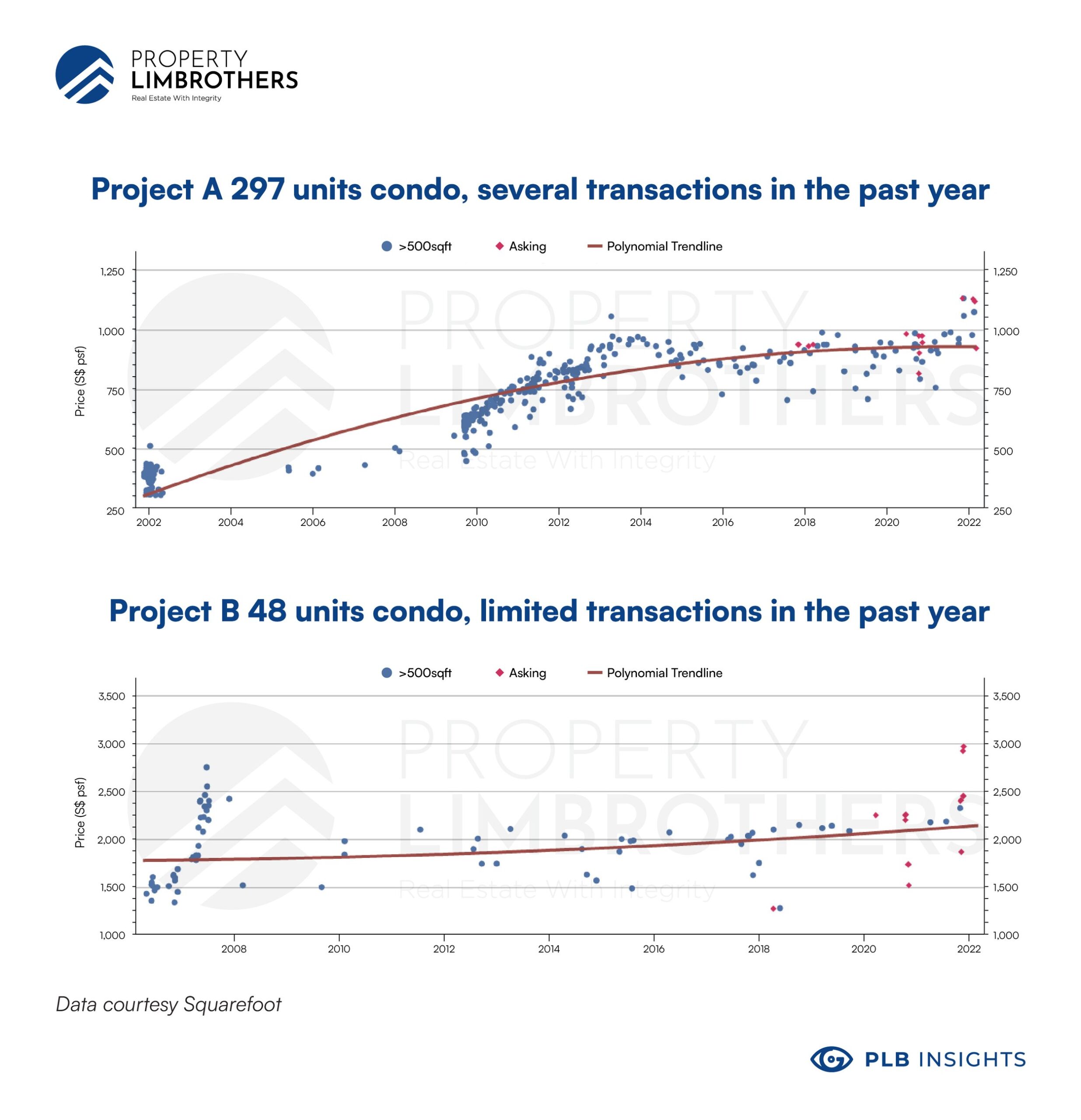
If you were a regular buyer who was looking for a property with a stable price movement, the natural inclination would be to choose Project A. With many units being bought and sold in the project, the most recent transaction price is updated frequently, instilling confidence in the increasing prices.
In a stable or uptrend market, like the one we are in today, potential sellers also use recent transaction prices as a benchmark for their asking prices. Since the market is likely to appreciate, sellers tend to price their properties higher than the previous transaction. When these sellers get offers that meet their asking price, the transaction price increases. Subsequent sellers see the transacted prices increasing and also price their units higher, causing a gradual effect on price appreciation. Thus, a higher volume of transactions gives the market confidence that there is high demand for the property and pushes prices upwards.
The connection between banks, volume, and the buyer
Banks play an important role in your decision to purchase a property because they determine your financing plans that could last over decades. The amount that a bank is allowed to loan to a buyer depends on how much they think the property is worth at the time of your purchase (the valuation). This might seem odd, since the bank is only concerned with whether the buyer is able to repay their loan. However, banks hold the property as collateral in the event of default. This means that the bank must be sure that the property, in the event it needs to be claimed as collateral and sold, can cover the entire amount that was loaned out. To do this, banks conduct valuations on the property through their in-house valuation teams by looking at past transaction prices to estimate how much the unit is worth on the open market. The bank then uses this fair valuation to calculate the loan amount based on the LTV and other criteria.
1. High volume is vital for accurate bank valuations
A high volume is beneficial for receiving the best financing options for your purchase.
Much like sellers, bankers use transaction prices in the past 12 months to arrive at a valuation for which to agree on the loan amount. Specifically in Singapore, bank valuation of a unit relies heavily on transaction data from the project that the unit belongs to, and less so on the surrounding projects. Thus, with more transaction volume for a project, banks can arrive at more up to date valuations than if they were to have limited data from a lower volume project .
While banks could look at surrounding projects for more data points, each project is unique in its characteristics and hence its value, meaning that two projects next to each other can have vastly different value. Some examples of such characteristics are: age, demographics, development status, unit sizes, and facilities.
In the case of Project B where there were only limited transactions in the past year, the bank may value the unit at a much more conservative value than the current market’s asking price. This would lead to a loan that does not cover the full price and the buyer having to fork out extra cash over the valuation. Thus, getting an accurate valuation is crucial in getting the best financing options for buyers.
2. Density as determinant of volume
Transaction volume can be understood as an effect of other factors that drive transactions in real estate. One key factor that is associated with volume is the density of a project.
Large developments are very dense and crowded with a high number of units within the project. Boutique projects, which are usually freehold, on the other hand are smaller and are likely to have fewer units changing hands over the same time period.
Generally, the more units a project has, the more units will be transacted, although there may be outliers to this rule. This is also a practical way of estimating the volume of relevant transactions since banks focus more on transactions happening within the same project rather than surrounding projects.
3. Power of volume in impacting property prices
To illustrate the power of volume in affecting property prices, we can look at a comparison between freehold and 99-year leasehold projects. By all points of comparison, a freehold unit should have a higher price PSF than a leasehold of similar location and features. However, this is seldom true in Singapore. We commonly see large 99-year developments holding higher PSF than a nearby freehold boutique project despite the allure of a freehold over a leasehold.
This is partly due to the influence of transaction volume affecting price performance. High volume projects allow prices to move quickly to the sentiment of the market while low volume projects serve as a barrier to slow down price movements, sometimes even discouraging would-be buyers from making a transaction.
Sidenote on lease durations and impact on prices in these examples
While the focus has been on density and the volume effect, the freehold vs. leasehold comparison would not be complete without mentioning other factors that are changing in the real estate market.
With land in Singapore becoming such a scarce resource, there has been a shift towards 99-year leases compared to the much older freehold and 999-year leases for properties. While 99-year leases used to be thought of as inferior, this sentiment has almost vanished in the current decade, as almost all projects in Singapore are now on 99 year leases. Thus, the notion of freehold and leaseholds have less influence on price than what is expected.
Still, as the lease of 99-year properties runs closer to expiry, the distinction between the two becomes stronger. This is encapsulated in Bala’s curve which describes how the value of a leasehold property should theoretically decrease as it moves closer to the 99-year mark.
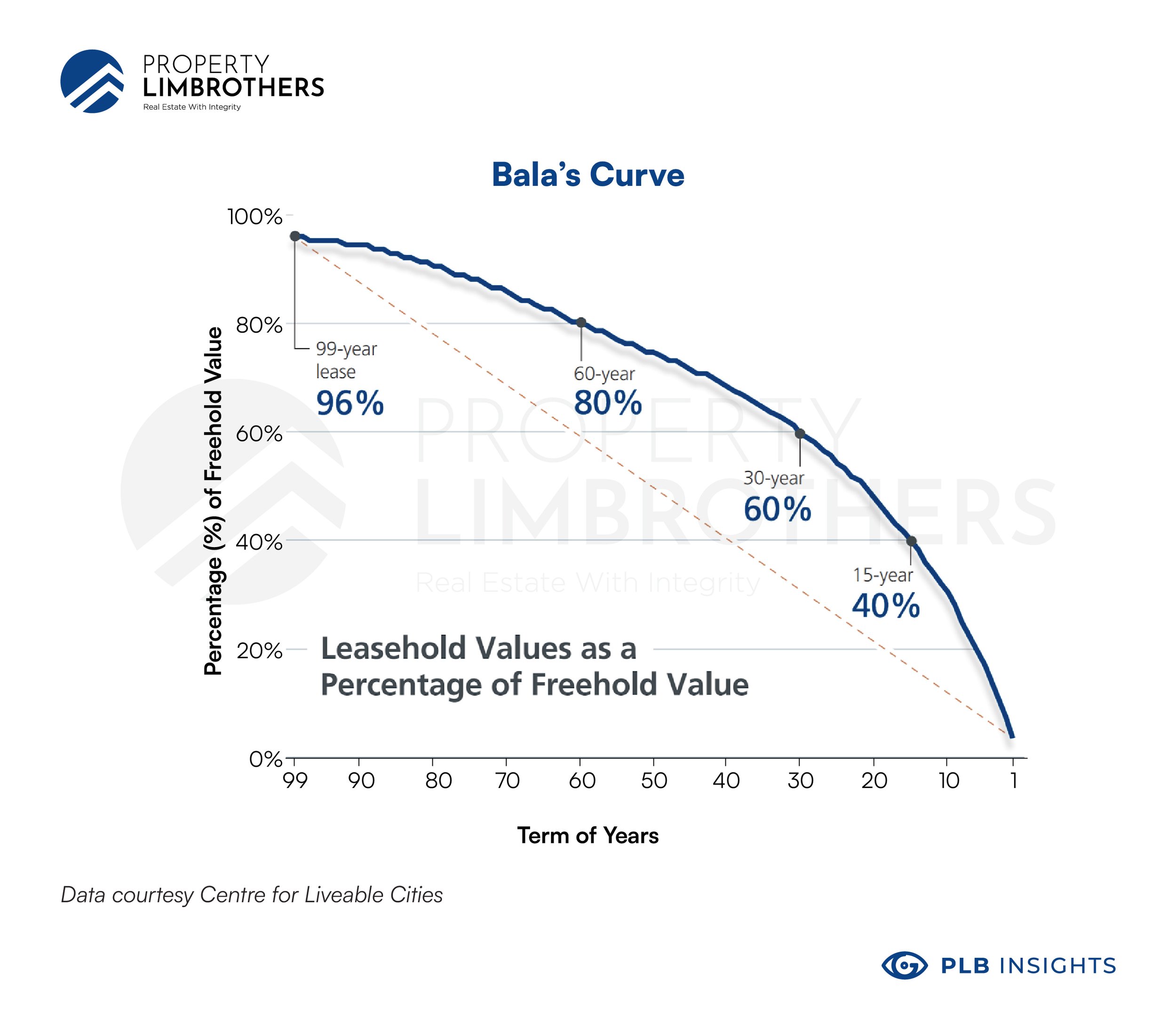
In practice, there are measures that further contribute to decline in value of a leasehold property. First, buyers of a property with less than 60 years of lease left are limited in how much CPF they can use for down payment. Secondly, with less than 30 years, banks will simply not allow you to take a loan for the purchase, meaning that the full sum has to come out of your savings. These measures contribute to a more drastic decline of value since buyers are deterred from purchasing these properties as they age. While Bala’s curve is the default for many properties in Singapore, there are some outliers that defy this trend.
An example is Mandarin Gardens which has appreciated in price despite having less than 60 years left in its lease. Some unique features of this project are the low PSF compared to surrounding properties, especially with the rise of more expensive new launches in the area. Units are also larger than usual making it very popular among buyers who are willing to trade lease duration for a lower PSF and larger properties. Mandarin Gardens also has a whopping 1,000 units in the residence with 281 transactions in the past 10 years, making it a consistently high volume property as seen in the transaction history graph.
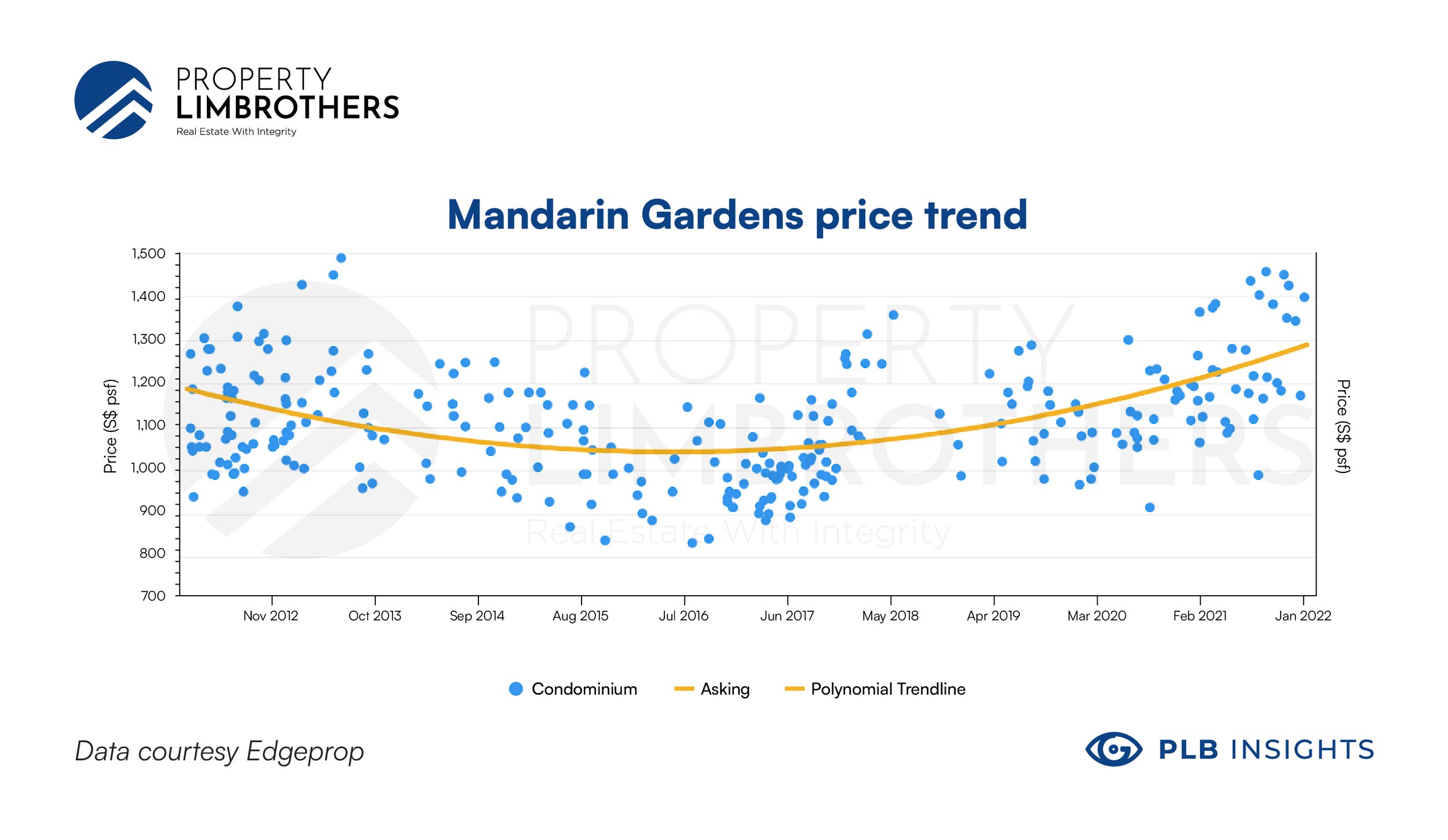
Recap on volume effects
Clearly, there are aspects of a property that matter more than price or unit size. If transaction volume is overlooked, a seemingly great property can become unsellable in the coming years. Even worse, the financing options that are available to you as a buyer are less favourable and can negatively affect your cash flow. A common saying in the stock market is that volume tells the strength of a price movement, and the same can be said of the real estate market as well.
High volume indicates confidence in the prevailing price trends and reinforces the psychology behind price movements. Yet, an overemphasis on any one factor can and will be detrimental to your analysis, if not understood within the larger context.
With a well-rounded MOAT analysis and special attention to volume trends, one can piece together a well-researched property decision with confidence that the property will easily sell when the time comes.
If the MOAT analysis is something you would like to try out for yourself, please do not hesitate to contact us here. As usual, we would be more than happy to assist you. Till then, see you in our next article!


